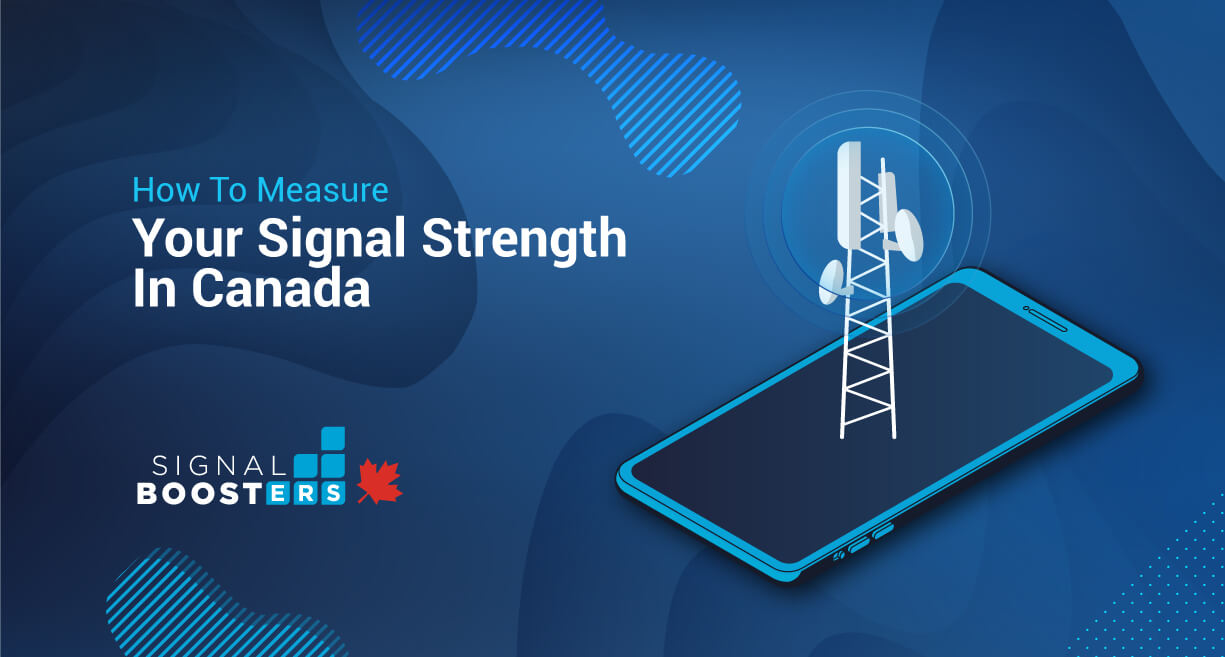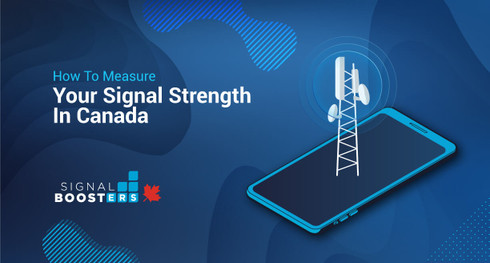How To Measure Cell Phone Signal Strength in Canada

When looking for a strong signal connection, we often find ourselves staring at the bars on our phones. Generally, the more signal bars you have, the stronger your connection. However, that is not always the case.
Bars are subjective. They vary across carriers and phone manufacturers. Thus, one bar on Telus could be 2 bars on Rogers and 3 bars on Bell despite having the same signal strength. For the most precise reading, we recommend measuring 4G and 5G mobile signal strength in dBm (decibel milliwatts).
In this article, we'll go over different ways to measure cell signal in Canada and what you can do to improve your connection.
Take advantage of our system design and installation services. Learn more or call us for a free consultation: 1-800-638-6336.
What Is Cellular Signal Strength?
Cellular signals are essentially radio waves. These waves travel between cell phones and cellular towers. Cellular signal strength, measured in decibel milliwatts (dBm), shows you how strong that link is, which impacts talk, text, and data speed.
Several factors affect cell signal strength. The top two are:
- Cell Tower Distance - Generally speaking, the closer you are to a tower, the stronger the signal.
- Building Material- Cellular signal has difficulty penetrating steel, concrete, Low-E glass, and the like. This is why you may experience weak signal or dead spots in some areas of your home or office building.
In general, cellular signal strength ranges from -50 dBm (strong) to -120 dBm (dead zone). This is a standard set across the world and most cell phones work fine as long as they're around the -80 dBm range.
When you get down to -100 dBm, the signal is going to be too weak, leading to dropped calls, failed texts, and slow data. At -120 or worse there may not be enough signal at all
How To Measure Cell Signal Strength
The most convenient and easiest way to check cellular signal strength on iPhones or Androids is through Field Test Mode or an app.
How Do I Measure Cell Signal Using Field Test Mode?
Field test mode is a software application built into most smartphones that provides users with detailed mobile network information. This includes accurate signal strength readings. Follow the instructions below to access field test mode on your device:
iPhone Field Test Mode:
Sequence will vary depending on your iOS. In general:
- Dial *3001#12345#*
- If rsrp does not appear on home screen, click through the tabs to find rsrp
- Your dBm will be displayed in the rsrp0 field
While all iPhone users can access field test mode, not all display rsrp. Thus, if the above method doesn’t work, try removing the * in the first step. If that still doesn’t work, your particular iPhone model and carrier may not allow it. (Skip down to see apps to use.)
Android Field Test Mode:
Sequence will vary across Android devices. In general:
- Tap Settings
- Tap About Phone
- Tap Status or Network
- Tap SIM Status
- Your dBm is under Signal Strength
What are the Best Apps to Measure Signal Strength?
There are loads of apps available to test signal strength. Many of them also offer information on cell tower locations, coverage heat maps, and more. Popular apps include:
- Network Cell Info Lite - This is our favorite cell phone signal strength app for Androids. It's extremely user-friendly. As soon as you open the app, it instantly starts measuring signal strength. It also measures signal noise which affects signal quality. As you move locations, the app updates in real-time.
- weBoost App - Being a cell phone signal booster manufacturer, weBoost designed an app to simplify installation. One of its functions is measuring cellular signal strength. For Android users, getting your dBm is as simple as selecting the "Signal" tab and taping "scan". On iPhones, the app walks you through field test mode to measure signal strength.
- OpenSignal – This app does not provide dBm readings but is extremely helpful for those experiencing challenges. Its speed test function lets you test how fast your data is, which is still a better measurement than signal bars. Faster speeds indicate stronger signals.
A Special Note About Signal Measurement Apps
Signal measurement apps are very popular, and as such, there are dozens of them available. This also means there are plenty of shady actors in the marketplace that spam you with adware or worse. Therefore, be sure to read all the reviews before you download.
What To Do Next...
Now that you know how to get dBm readings, walk around your property to identify areas with the strongest signal. dBm readings can take a couple of seconds to refresh, so walk slowly.
Once you've pinpointed the best spots, you have a couple of options.
The first option is to make your calls from that exact spot. Though, it may be inconvenient if you constantly find yourself standing outside.
The second option is to consider investing in a cell phone signal booster. They take your outside cell signal, boost it, and rebroadcast it indoors to get you the coverage you need to stay connected. For more information, visit our blog on how cellular signal boosters work.
Shop Signal Boosters (Canada!)
If your cellular signal strength is low, let Signal Boosters Canada give you a boost. We are a leading distributor of IC-approved cell phone signal boosters for homes, offices, and vehicles. For large commercial buildings, we also offer professional installation services.
No matter your signal situation we can help. Give us a call at 1-800-638-6336 or email us at sales@signalboosterscanada.ca.

